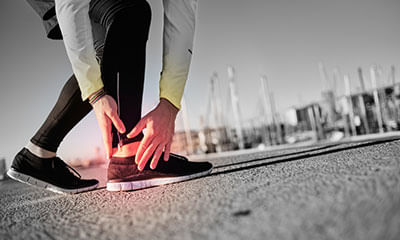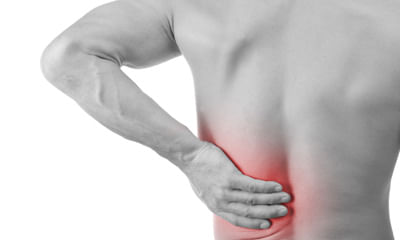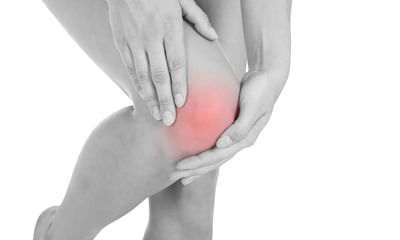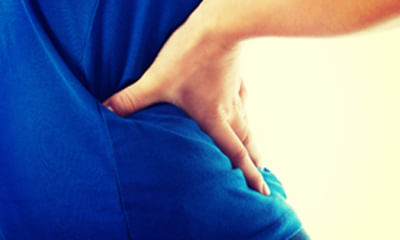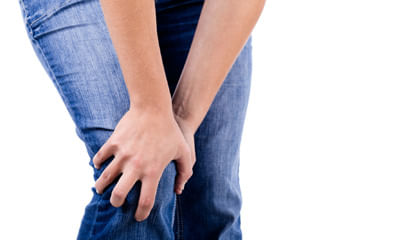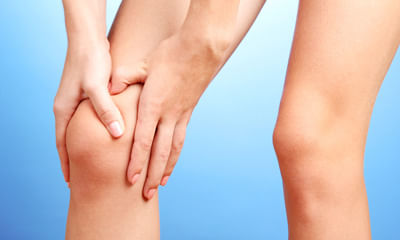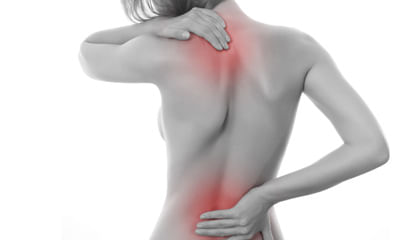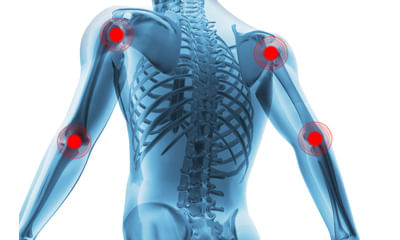Get the App
For Doctors
Login/Sign-up
About
Health Feed
Find Doctors
Health Packages
AllQ&AsTipsQuizzes
Heel Pain Health Feed
Health Query
Share
Bookmark
Report
Stretching and strengthening exercises or use of specialized devices may provide symptom relief. These include:
physical therapy. A physical therapist can instruct you in a series of exercises to stretch the plantar fascia and achilles tendon and to strengthen lower leg muscles, which stabilize your ankle and heel. A therapist might also teach you to apply athletic taping to support the bottom of your foot.
Night splints. Your physical therapist or doctor might recommend that you wear a ...more
physical therapy. A physical therapist can instruct you in a series of exercises to stretch the plantar fascia and achilles tendon and to strengthen lower leg muscles, which stabilize your ankle and heel. A therapist might also teach you to apply athletic taping to support the bottom of your foot.
Night splints. Your physical therapist or doctor might recommend that you wear a ...more
32 people found this helpful
Health Query
Share
Bookmark
Report
The inflammation is still there in the ankle otherwise you will not feel burning sensation in the heel. You can keep the ankle still on plaster until 16 weeks from the day of fracture which will help you to feel better in the day today life. Check with the orthopaedician so that the ankle fracture sites should be checked before the next cast is put on the ankle sites.
7 people found this helpful
Asked for female, 33 years old from Delhi
Share
Bookmark
Report
Asked for male, 51 years old from Ernakulam
Share
Bookmark
Report
Asked for male, 55 years old from Delhi
Share
Bookmark
Report
Orthopedic Doctor•Kottayam
It is probably a prolapsed intervertebral disc with sciatica causing radiating pain to knee and foot.
She needs to avoid lifting weights/squatting/bending
needs plenty of fluids/back strengthening exercises.
If there is limb weakness/difficulty in passage of urine ,then mri is advisable.
Pregabalin can be taken for a month along with analgesics.
Diabetic profile also needs to be monitored.
She needs to avoid lifting weights/squatting/bending
needs plenty of fluids/back strengthening exercises.
If there is limb weakness/difficulty in passage of urine ,then mri is advisable.
Pregabalin can be taken for a month along with analgesics.
Diabetic profile also needs to be monitored.
Asked for male, 45 years old from Kurnool
Share
Bookmark
Report
Heel pain is most often caused by plantar fasciitis, a condition that is sometimes also called heel spur syndrome when a spur is present. Heel pain may also be due to other causes, such as a stress fracture, tendonitis, arthritis, nerve irritation or, rarely, a cyst
•rest as much as possible.
•apply ice to the heel for 10 to 15 minutes twice a day.
•take over-the-counter pain medications.
•wear shoes that fit properly.
•wear a night splint, a special device that stretches the...more
•rest as much as possible.
•apply ice to the heel for 10 to 15 minutes twice a day.
•take over-the-counter pain medications.
•wear shoes that fit properly.
•wear a night splint, a special device that stretches the...more
21 people found this helpful
Asked for male, 19 years old from Motihari
Share
Bookmark
Report
If you have leg pain then you have to rule out the causes for having leg pain. First of all check your weight and your haemoglobin levels, as anaemia always leads to the symptoms of being tired and also having leg pain though there are no issues with the knee joint or back pain. If not if the pain radiates down the back of thigh and legs then it might be due to sciatica. Kindly consult the nearby physiotherapist. Hope you recover soon from the leg pain.
27 people found this helpful
Health Query
Share
Bookmark
Report
Rest as much as possible.
Apply ice to the heel for 10 to 15 minutes twice a day.
Wear shoes that fit properly.
Wear a night splint, a special device that stretches the foot while you sleep.
Use heel lifts or shoe inserts to reduce pain.
Do an x-ray of affected heel. Consult online with details.
Apply ice to the heel for 10 to 15 minutes twice a day.
Wear shoes that fit properly.
Wear a night splint, a special device that stretches the foot while you sleep.
Use heel lifts or shoe inserts to reduce pain.
Do an x-ray of affected heel. Consult online with details.
24 people found this helpful
Asked for female, 53 years old from Bangalore
Share
Bookmark
Report
Health Query
Share
Bookmark
Report
Prevention
•wear shoes that fit properly and support the foot.
•wear the right shoes for physical activity.
•stretch your muscles before exercising.
•pace yourself during physical activity.
•maintain a healthy diet.
•rest when you feel tired or when your muscles ache.
•maintain a healthy weight.
Treatment
•rest as much as possible.
•apply ice to the heel for 10 to 15 minutes twice a day.
•take over-the-counter pain medications.
•wear shoes that fit...more
•wear shoes that fit properly and support the foot.
•wear the right shoes for physical activity.
•stretch your muscles before exercising.
•pace yourself during physical activity.
•maintain a healthy diet.
•rest when you feel tired or when your muscles ache.
•maintain a healthy weight.
Treatment
•rest as much as possible.
•apply ice to the heel for 10 to 15 minutes twice a day.
•take over-the-counter pain medications.
•wear shoes that fit...more
5 people found this helpful
Book appointment with top doctors for Heel Pain treatment
View fees, clinic timings and reviews
Ask a free question
Get FREE multiple opinions from Doctors
posted anonymously



